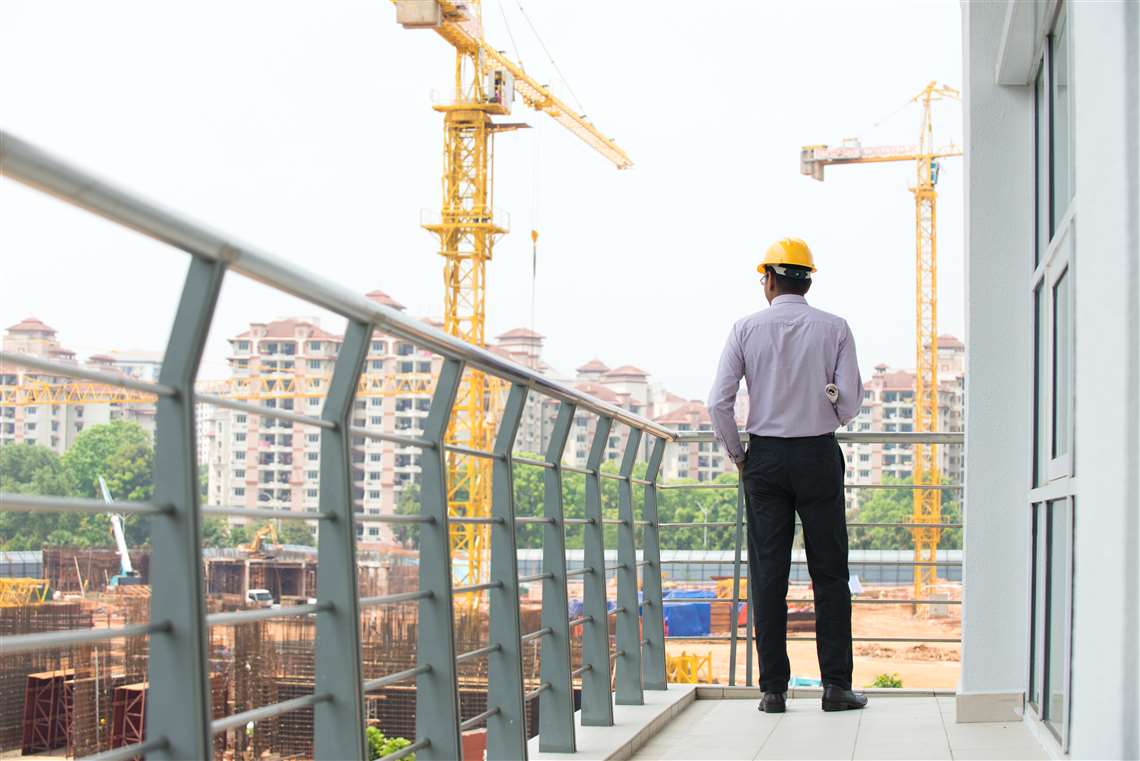Investing in India’s construction industry
05 April 2022
Despite the challenges that continue to disrupt the construction sector, India is emerging as a growing economy that has learned to adapt and overcome, reports Catrin Jones.
The Indian construction market is well positioned for strong growth, with government-led construction projects driving the economy onwards and upwards after the impact of the pandemic. Whilst India’s construction sector has seen disruptions, there is optimism for the future, with initiatives and processes being adapted to propel large-scale projects.
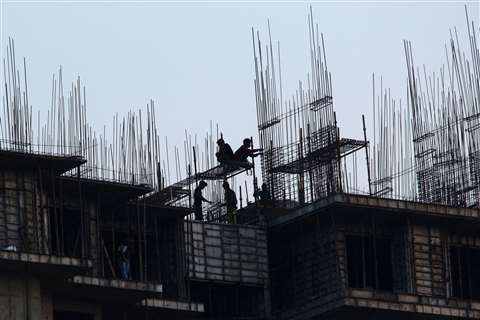 Workers fasten iron rods at the construction site of a building in a residential neighborhood in Ghaziabad, on the outskirts of New Delhi, India (Photo: Reuters/Mayank Makhija/NurPhoto)
Workers fasten iron rods at the construction site of a building in a residential neighborhood in Ghaziabad, on the outskirts of New Delhi, India (Photo: Reuters/Mayank Makhija/NurPhoto)
Significant government investment into India’s infrastructure will see a step up in spending, states a news report from Reuters. In the coming fiscal year, 39.45 trillion rupees (US$529.7 billion) will be invested to further drive economic growth across the country.
The level of growth is estimated to be 9.2% for 2021/2022, coming off a low base and slowing to 8- 8.5% in the coming fiscal year.
Finance Minister, Nirmala Sitharaman, presenting the annual budget to parliament, said total government spending in the 2022/23 fiscal year beginning in April will be 4.6% more than the current year.
“The construction and infrastructure sector are a crucial part of the Indian economy,” says Sandeep Mathur, India general manager and business head at CNH Industrial. “The Government is making tremendous investments to keep the development going.”
Is infrastructure in India improving?
The government has announced major investments by accelerating the Gati Shakti Master Plan. The plan, worth approximately US$1.35 trillion, was launched by the government last year with the aim of bringing in integrated planning and execution of large-scale projects. Prime Minister Modi said it would reduce time and cost overruns of projects, and thus help fast track infrastructure projects by enhancing coordination across 16 ministries to better reach infrastructure and connectivity targets.
There are numerous schemes in India to aid development – in May 2020, Modi set out the Atmanirbhar Bharat economic vision and development of the country that will see India becoming ‘self-reliant’ within the global supply chain.
The increased investment into India’s infrastructure, and a rise in large-scale projects across the country, means a higher demand for construction equipment. “As per a report by Indian Construction Equipment Manufacturers Association (ICEMA), the construction equipment industry recorded a 47% growth in the second quarter of FY2021-22,” says Case’s Mathur.
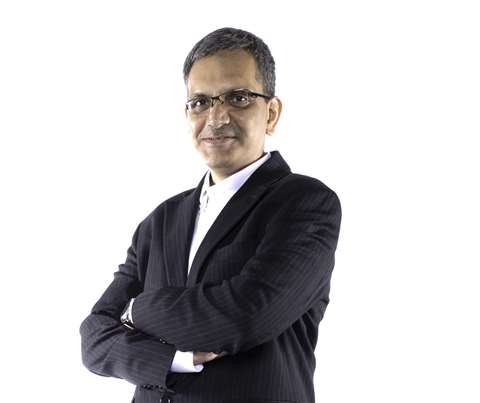 Sandeep Mathur, India general manager and business head at CNH Industrial (Photo: CNH Industrial)
Sandeep Mathur, India general manager and business head at CNH Industrial (Photo: CNH Industrial)
“We can expect the market to be more stable as infrastructure projects will start and the demand will gradually increase helping the key players to increase their market share in the industry,” he added.
India will also extend its collaboration and trade relations in construction machinery with Europe after recently signing a Memorandum of Understanding. CECE president Alexandre Marchetta and ICEMA president Dimitrov Krishnan are extending an initial partnership formalised in 2019 with the intention to understand reciprocal market developments and improve market access and global trade.
CECE president, Alexandre Marchetta, said, “Both European and Indian markets offer great potential for the construction equipment industry.” The partnership will strengthen both markets and Marchetta knows the importance of this, adding that, “close collaboration helps the industry in improving market access and accelerating technical developments.”
Electric power in India
Samir Bansal, general manager, Off-Highway Research India, also notes the growth in the construction equipment sector, commenting that, “Off-Highway Research forecasts the market to grow 15% in 2022 to 94,100 units and peak at 107,450 units in 2025.”
Sales of electric and machine-controlled equipment is increasing (although from a low level) and has momentum, but its continued growth will be dependent on several factors – especially in developing markets such as India, where cost is often the primary driver.
 Case Construction Equipment backhoe loader 770FX (Photo: Case Construction Equipment)
Case Construction Equipment backhoe loader 770FX (Photo: Case Construction Equipment)
Mathur suggests that increasing electrification across the industry will require enthusiasm from both the government and customers. “The speed of its adoption will depend on governments introducing mandates and incentives, electric infrastructure developments to meet all the demand, as well as customers’ willingness to invest in a technology that is still in its early days, which has a cost implication.”
Case Construction has recognised an increasing interest in electric models and, through the strategic acquisition of Italian-based mini-excavator manufacturer Sampierana, have been able to enhance their capabilities in electric powertrains. Mathur says, “The industrialisation of full-electric models is well underway, and on track for the launch to the markets is the first Case electric mini-excavator in 2022.”
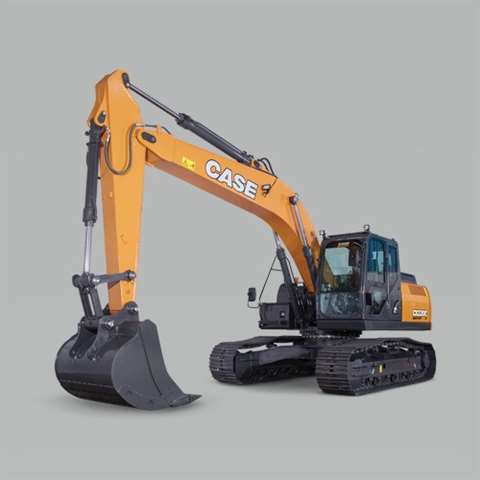 Case Construction Equipment crawler excavator CX220C (Photo: Case Construction Equipment)
Case Construction Equipment crawler excavator CX220C (Photo: Case Construction Equipment)
Whilst there is an increase in the electrification of construction equipment, a full move to alternative power is still firmly in the distance, says Off-Highway Research’s Bansal.
“Introduction of CEV-IV emission norms for wheeled construction equipment last year has mandated change to electronic engines and almost all equipment now have telematics. Whilst the use of alternative power is still some time away, the government is promoting blending of fuel with up to 20% Ethanol by 2025.”
As a result of India’s push for clean energy and desire to meet its target, ethanol blending in petrol has risen to 8.1% in the ethanol year 2020-21 – up from 5% in the previous year.
Trillion-dollar Indian economy
Off-Highway Research’s Bansal notes that investments of Rs111 trillion (US$1.5 trillion) are planned across a five-year period under the government-backed National Infrastructure Pipeline (NIP).
The NIP aims to improve project preparation and encourage the private and public sectors to form partnerships that will encourage further infrastructure growth. This is in line with India’s ambitious goal to be a USD$5 trillion economy by 2025.
The Indian government’s infrastructure projects for the year ahead focus on creating an integrated multi-modal national network of transportation and logistics – with over 70% of the projected capital expenditure being spent on energy, roads, urban development, and railways.
Whilst India focuses on maximising connectivity across the country, Bansal cautions that there are challenges ahead as India, and the world, slowly edges out of the Covid-19 pandemic. “Uncertainty due to Covid persists and challenges to the expected growth in construction equipment demand include Government’s ability to execute projects, supply chain issues, capacity constraints and availability of skilled operation and maintenance manpower.”
The challenges Bansal anticipates in the construction equipment industry are also present across the entire sector. A disruptive supply chain means an increase in material costs and difficulty sourcing particular materials, but to mitigate the impact this could be an accelerant towards the modernisation and digitisation of Indian construction processes.
With significant government investment into infrastructure looking promising for large-scale connectivity projects and growth increase for the coming fiscal year, India appears to be recovering from the midst of the pandemic.
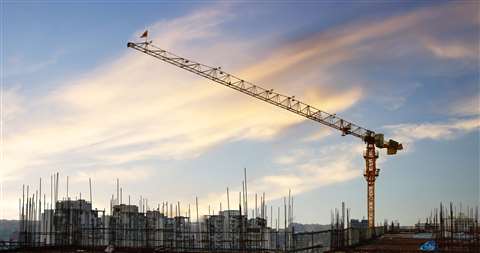 Potain crane works on residential development site in Pune, India (Photo: Potain)
Potain crane works on residential development site in Pune, India (Photo: Potain)
The Godrej Forest Grove project, due to be completed in April 2024, comprises a total of fourteen towers built as seven separate structures. All the cranes on the project were configured in the internal floor-climbing mode, ending the project with heights under hook between 70m and 80m, and with jib lengths of 25m to 30m.
The models are especially popular in India and throughout Asia due to the internal climbing configuration being built around 1.2m² mast sections. This enables the crane to fit inside narrow elevator shafts and operates with shorter jib lengths to maximise lifting capacity. In this setup, the cranes can be configured at a maximum freestanding height of 33.2m.
Potain is aware of the challenges Indian construction projects face and note that their topless cranes, with easy to adjust jib lengths, are proficient in confined spaces where overlapping operations might create problems for hammerhead models.
Excon goes ahead
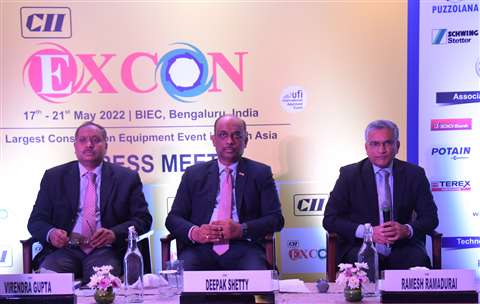
The Confederation of Indian Industry (CII) has announced that the 11th edition of Excon will take place at Bengaluru International Exhibition Centre (BIEC) in May this year.
“Excon is happening at a time when our economy is on the path of transition towards a ‘New India’ and there is renewed confidence among industry players on the revival of economy against the backdrop of robust policy measures and major thrust on infrastructure development by the Government of India”, said Deepak Shetty, chairman of Excon 2021 and managing director of JCB India Limited
In line with the growth of the industry, Excon’s theme is ‘Building India for a New World – Competitiveness, Growth, Sustainability, Technology.’ The event will include a specific focus on the Atmanirbhar Bharat initiative of the Government.
STAY CONNECTED


Receive the information you need when you need it through our world-leading magazines, newsletters and daily briefings.






